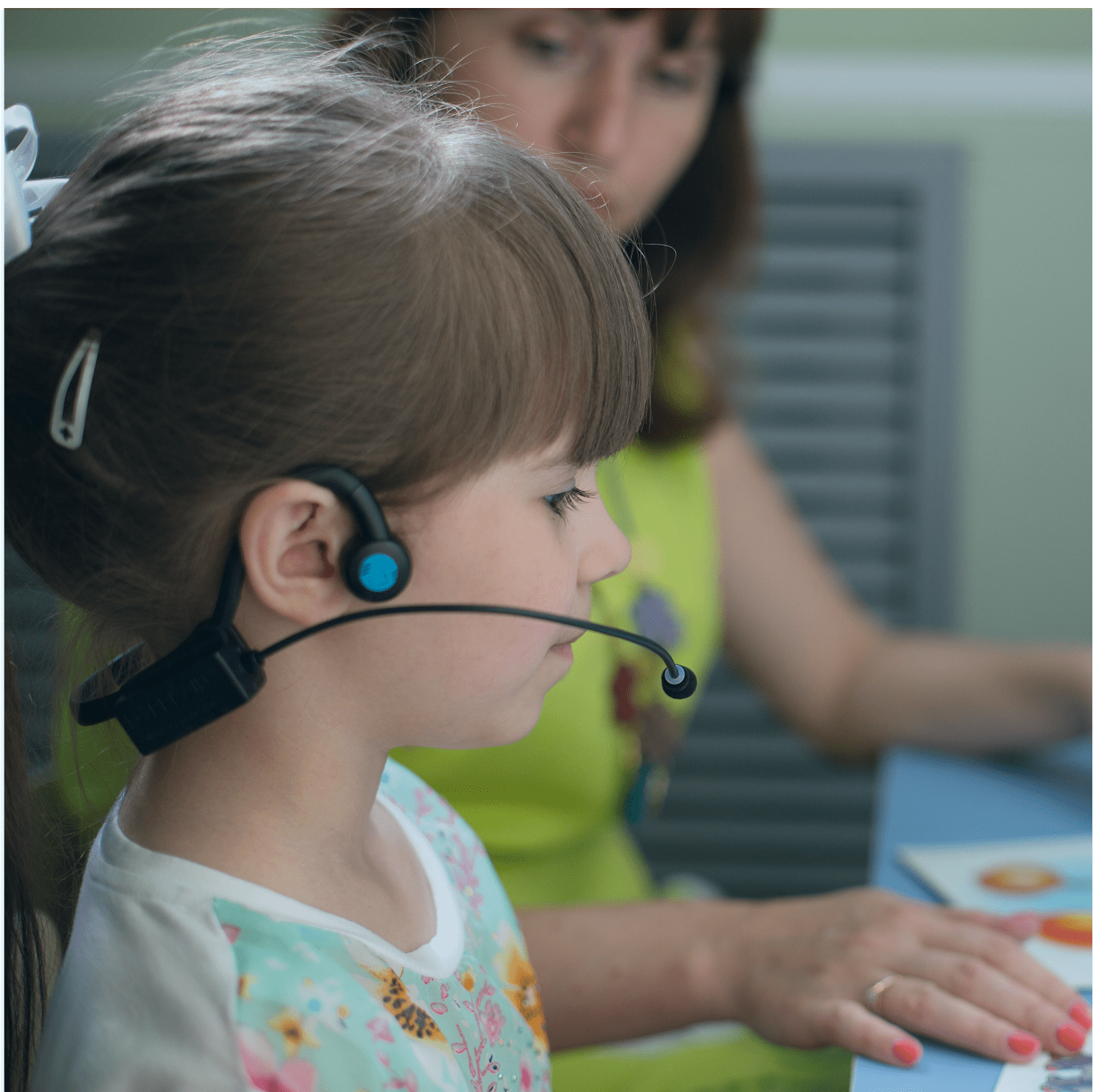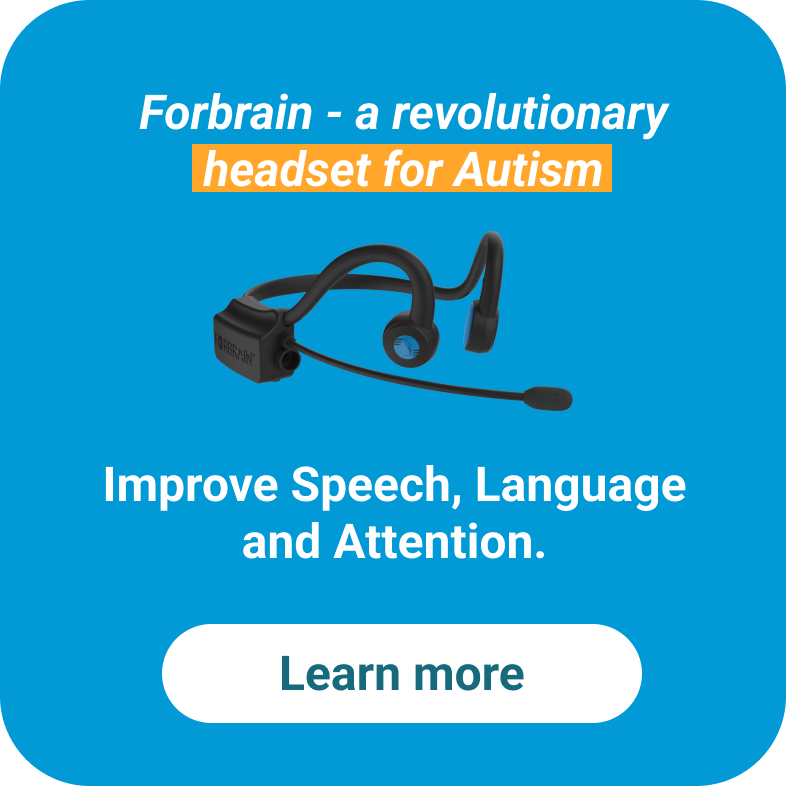Autism Therapy at Home: Working Strategies for Parents
 Amanda Unrau
Amanda Unrau Speech-Language Pathologist
September 04, 2023

If your child has autism, you may be wondering how to cure autism at home, and if it’s possible to cure autism at all. Although autism can’t really be cured, there are things you can do at home to help your child. In fact, home therapy is extremely important for children with autism. It is helpful for both the child and the parents, as well as the rest of the family. Home therapy for autism has many benefits, including parental involvement, flexibility, consistency, a familiar environment, repeated opportunities for practice, and a natural setting.
Below are several in-home autism therapy treatments that parents and teachers can implement in the home environment.
Play therapy
Play therapy is an autism treatment approach that builds on a child’s interests. A play therapist can show you how to engage your child in play as a tool to build skills. Your child can choose their desired toy, or you can encourage your child to participate in a high-interest activity. Play can then be used to improve reciprocal play skills, which can in turn improve social and communication skills.
Here are some examples of play therapy activities that you can try at home:
- Imaginative Play: Use puppets, dolls, or action figures to create stories that teach turn-taking, sharing, and conversation skills.
- Building Activities: Engage in building with Legos or blocks to develop problem-solving skills, creativity, and fine motor coordination
- Interactive Games: Simple games like ‘Simon Says’ or ‘Follow the Leader’ can enhance listening skills, focus, and following instructions.
- Puzzles and Sorting Games: These activities encourage patience, concentration, and help with visual and spatial awareness.
- Sensory Play: Engage with sensory bins filled with sand, water, or tactile toys to improve sensory processing and emotional regulation.
Speech therapy
Children with autism have difficulty with communication and social skills, and speech therapy for autism can address these. A speech language pathologist (SLP) can help individuals with autism to improve their verbal and nonverbal communication. This may include working on conversation skills, interpreting nonliteral and nonverbal language, or implementing an Augmentative and Alternative Communication (AAC) device.
As with any services your child receives, home practice with your child is crucial. You can practice the skills your child is working on during their speech therapy sessions. These can often be incorporated in daily tasks at home:
- Reading Together: Read books aloud and ask open-ended questions to encourage your child to express ideas, recognize emotions, and engage in conversation.
- Narrating Daily Activities: During tasks like cooking or cleaning, narrate your actions and ask your child to describe what’s happening to enhance vocabulary and sentence structure.
- Practice Turn-Taking in Conversations: Engage in simple back-and-forth conversations during mealtime or play to improve conversational skills and patience in communication.
- Use Visual Supports: Create visual aids, like picture cards or charts, to help your child understand and practice nonverbal communication or use them with AAC devices.
- Interactive Play: Incorporate games that involve describing objects, emotions, or actions (e.g., charades) to support nonverbal and verbal communication.
ABA therapy
In-home ABA therapy is an effective approach to help children with autism develop essential skills such as play, self-care, communication, and social interaction. Based on the principles of behavioral theory, it focuses on reducing negative behaviors while teaching new skills. With in-home ABA therapy, parents and children can work together to choose specific tasks or behaviors to target.
Consistency is key—once a plan is established, it’s important to respond to the behavior the same way each time to reinforce progress. This personalized method makes ABA therapy a flexible and practical option for home treatment.
Relationship development
Relationship Development Intervention (RDI) is a comprehensive behavioral treatment that involves the entire family, focusing on strengthening parent-child relationships. The goal of RDI is to improve the dynamic intelligence of children with autism—the ability to think flexibly, adapt to changing situations, and engage in social interactions. Through guided participation and meaningful experiences, RDI helps children build essential social and emotional skills, enabling them to better share experiences and connect with others.
Some key elements of RDI include:
- Family Participation: Parents play a central role in RDI, learning techniques to support their child’s social and emotional development through everyday interactions.
- Guided Interaction: Activities focus on guiding the child through situations that require flexible thinking, such as problem-solving tasks or collaborative play.
- Emotional Awareness: Parents are taught to help their child recognize and respond to emotions, both their own and others, fostering empathy and emotional intelligence.
- Gradual Progress: RDI works in stages, starting with simple interactions and gradually progressing to more complex social tasks, building the child’s confidence and capabilities.
Parent-child interaction
Parent-Child Interaction Therapy (PCIT) is an evidence-based treatment designed to reduce negative behaviors, improve child compliance, and strengthen the parent-child bond. In PCIT, parents are coached on specific play skills and positive reinforcement strategies to achieve these goals.
The therapy focuses on building a nurturing, yet structured environment where children can thrive emotionally and behaviorally. PCIT is often used alongside other treatment modalities for a holistic approach to autism support.
Floortime
Similar to Play Therapy, Floortime focuses on building a relationship with your child. Unlike behavioral therapies, the emphasis of Floortime is making connections. By getting on the floor and playing with your child, you are interacting with them at their level. Follow your child’s lead and join them in their preferred activities, and then encourage your child to participate in verbal or nonverbal interactions.
Tips on Starting with Autism Therapy at Home
How do you set up in home therapy for autism? Here are some ways to get started:
Create a structured and predictable environment
In order for home therapy to be successful, the environment needs to be structured and orderly. Set up a routine for when structured therapy will take place. Choose a dedicated room or area of your house, and gather the necessary supplies so that they are easily accessible.
Develop an individualized therapy plan
Every child with autism is unique, so each child needs their own unique therapy plan. An important step in devising a plan is completing comprehensive assessments. Information from evaluations can be used to determine a child’s strengths and weaknesses. Personal goals, such as what a child wants to be able to do, or what the family would like them to do, are important components of the plan.
Choose specific learning styles beneficial to your child
Just as every child will have different goals, each child will learn in a different way. Try out multiple modalities to see what your child responds to. Some children enjoy music, others require movement or sensory input, others need pictures or other visuals, etc.
Incorporate visual support
Visual supports help children with autism make sense of their world. An example of a visual support is a visual schedule with a list of tasks, events, or steps of a task, and associated pictures.
Establish consistent routines
Children with autism thrive under a routine. They need to know what to expect and what is coming next, and struggle with disorder and last minute changes. While some schedule interruptions are unavoidable, have consistent routines for mornings, after school, mealtimes, and bedtime make for smoother days.
Use technology tools
Many children with autism are more engaged when technology is incorporated. You can utilize effective communication tools for autism at home. Children who have difficulty communicating verbally may use an AAC (Augmentative and Alternative Communication) device, which is a form of technology and can even be an app on an iPad. AAC gives an auditory voice to children who are nonverbal, so they can communicate wants and needs and participate in conversation.
Forbrain is another technology tool that can be used at home. An auditory stimulation headset, Forbrain provides children the opportunity to hear their own speech, which improves focus.
How can I track and Measure my Child’s Progress during Autism Home Therapy?
There are many ways to measure your child’s progress when treating autism at home. If you hire a therapy company or clinicians to work with your child, they will take data during their sessions and track progress over time. Progress updates will be shared with you on a regular basis.
You can also track progress on your own. Establish specific goals or objectives for your child. For example, maybe you want them to be able to get dressed for school independently. Break that down into smaller benchmarks, such as putting only their shirt on, or you start by laying out their clothes for them. Make note of how often they are able to complete each specific skill and how many reminders they need. As they continue to make progress, you can add more benchmarks or increase the difficulty level of the task.
FAQs on Autism Therapy at Home
How can I do speech therapy at home for autism?
Some speech therapists will come to your home to conduct their speech therapy sessions. You and the rest of your family will likely be more involved in sessions when they are at home. You will also be taught how to continue to practice with your child in between speech therapy sessions. You can continue to target your child’s speech and language goals in their natural environment at home.
Is autism home therapy as effective as therapy provided in a clinical setting?
Both the clinical and home setting of autism therapy offer their own advantages. Autism therapy at home takes place where your child is most comfortable. You are more involved and can help your child achieve mastery of daily skills. You may find that a combination of both settings may work best for your child.
How do I determine which therapy techniques are most appropriate for my child’s specific needs?
Research any treatment approaches that interest you. You can also contact professional therapists who are experts in their area to find out more information or have them come meet your child. You may need to try several different therapy approaches in order to determine the best fit for your child. What your child needs may also change over time as they grow and mature. Many families will find that a combination of more than one treatment modality addresses all areas of need.
Are there any potential risks or drawbacks to conducting therapy at home without professional supervision?
It can be difficult for you as the parent to know if therapy is being done correctly and effectively or to determine progress accurately. In addition, it can be difficult to separate leisure time or other aspects of home life from therapy time since they are all conducted in the same space. Doing autism therapy at home is a big commitment, and it may be difficult to remain consistent during disruptions such as family emergencies or other stressors.
What is the best home environment for autism?
Home therapy is beneficial because it is conducted at home. Wherever a child’s home is will be the most natural setting for that child. While there isn’t necessarily one type of home environment that is best for autism, certain components can help your child be more successful, such as having a routine, a dedicated therapy space, and family support.
Using Forbrain to Help with Autism Spectrum Disorder
Forbrain can be a positive addition to your at home autism therapy. Forbrain is an auditory stimulation headset that helps children to hear and process the sounds they produce, louder and better. This helps children with autism to focus better. This can help them tune out background noise at home, which will make home therapy more effective by reducing distractions.
Final Words
Autism therapy at home is an effective way to treat and improve the skills of children with autism. There are a variety of options to choose from or combine. As parents, educators, and healthcare professionals, use different individualized strategies to help children with autism learn better.
References
American Speech-Language-Hearing Association. (Accessed 2023, September 16). Applied Behavior Analysis and Communication Services. ASHA. https://www.asha.org/NJC/Applied-Behavior-Analysis-and-Communication-Services/
American Speech-Language-Hearing Association. (Accessed 2023, September 16). Autism Spectrum Disorder. ASHA. https://www.asha.org/Practice-Portal/Clinical-Topics/Autism/#collapse_6
American Speech-Language-Hearing Association. (Accessed 2023, September 16). Autism (Autism Spectrum Disorder). ASHA. https://www.asha.org/public/speech/disorders/Autism/
Masse, J. J., McNeil, C. B., Wagner, S. M., & Chorney, D. B. (2007). Parent-Child Interaction Therapy and High Functioning Autism: A Conceptual Overview. Journal of Early and Intensive Behavior Intervention, 4(4), 714–735. https://doi.org/10.1037/h0100402
Rudy, L. J. (2023, July 28). Benefits of Play Therapy and Autism. VeryWell Health. https://www.verywellhealth.com/play-therapy-and-autism-the-basics-260059
Rudy, L. J. (2023, July 28). Floortime Play Therapy for Children With Autism. VeryWell Health. https://www.verywellhealth.com/floortime-play-therapy-overview-4582061





